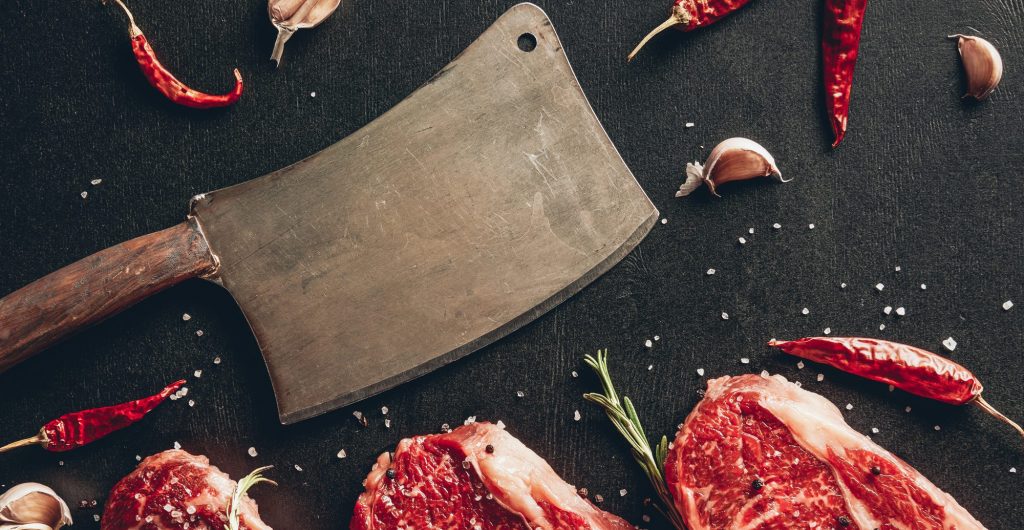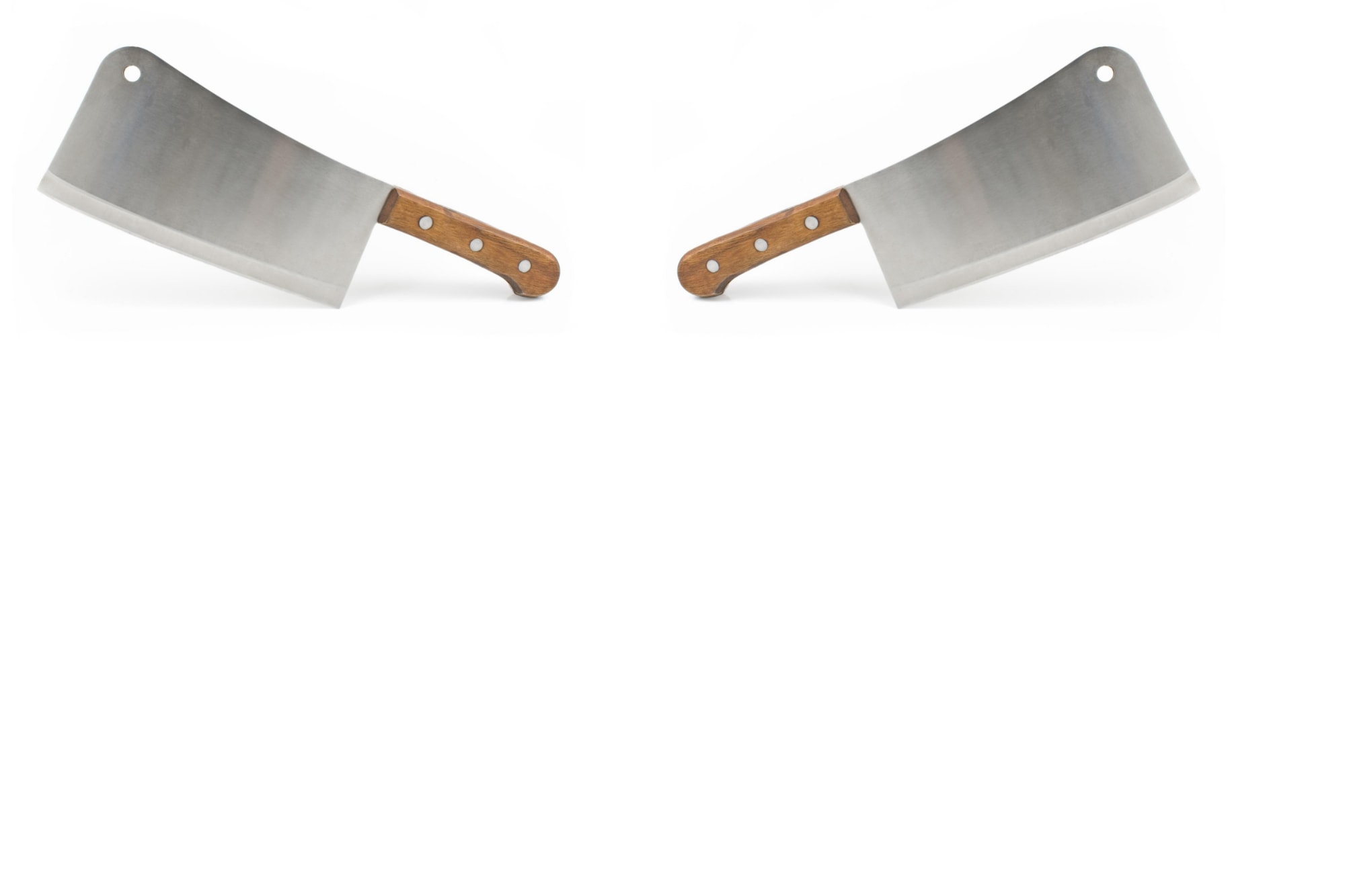Meat cleavers and similar kitchen knives are trusted by thousands of professional chefs around the world every single day. The more astute among you may have noticed that many of these knives share one common trait – a hole. So, why is there a hole in the cleavers?
On this page, we’ll find out. We’ll offer a basic overview of what makes these holes useful and make a few recommendations about care and maintenance.
In a Nutshell – Why Meat Cleavers Have Holes?
Don’t have time to read the whole thing? We don’t blame you.
The size and shape of this kind of knife mean that it’s often more convenient to hang it from a hook – thus, the hole.
There are plenty of other suggested reasons for this hole that can be found online. It’s important to note that the jury is still out on a lot of these.
Below are some of the most commonly cited reasons for the hole in meat cleavers. We explore the accuracy and relevance of each.
1. The Strongest Suggestion – Hanging the Knife
This first reason is arguably the easiest to test and prove; just go to any butcher and take a look at the wall behind the counter. Chances are, you’ll see a row of hooks holding any number of utensils, including knives.

This makes sense when you consider the size of your average chef’s cleaver. These knives are usually too large to store conveniently in a knife block or drawer. In fact, these methods of storing can eventually dull your cutting edge and make your knife less effective.
For this reason, magnetic knife blocks or knife hooks are common in professional kitchens around the world.
If there’s just one reason for the holes in most cleavers, it’s this one.
2. Another Strong Reason – It’s Iconic
As cynical as it may sound, a huge reason that meat cleavers have holes is that, well, that’s how they’ve always looked. Successfully selling a product relies on recognition; your customer has to see your product and immediately understand what they’re looking at.
The hole in most cleavers is iconic; it’s what people expect to see when buying this type of knife. While there are very real, practical reasons for wanting a hole in your knife, ‘looking the part’ appears to be just as significant.

3. Another Possible Reason – ‘Unsticking’ from Meats
This one likely depends on the specific knife you’re using and the tasks you complete with it.
Ever been cutting through a particularly dense or frozen piece of food only to have your knife get stuck? Some people argue that the hole on most cleavers provides extra leverage to help pull the knife free and continue working.
On some cleaver models, the placement and size of the hole suggest that this may indeed be a potential use case. On others, however, the hole seems far too small or is placed far too inconveniently for this idea to ring true.
Based on our research, we think this one is true for some specific models, but it depends on the make and model of the knife that you’re using.
4. Does it Prevent Meat from Sticking to the Blade?
The jury is most certainly out on this one. Some users online suggest that the single hole – usually found near the top of the blade – helps prevent food like meat from adhering to the knife when cutting.
If you ask us (and many professionals online for that matter), this suggestion doesn’t really hold up to scrutiny. For starters, the hole on most cleavers is positioned way too high for it to have this ‘unsticking’ effect. Your average filet wouldn’t even make contact with it, for example.
If you’re hacking through a huge chunk of meat, it might have some impact. In most cases, however, this unsticking effect is likely a misconception.
While we’re on the subject, there are plenty of knives out there that are designed to stop foods from sticking to your blade. You’ll want to look out for something called a ‘scalloped’ or ‘Granton’ edge.
Products like this one from Dalstrong feature small ‘scallops’ along the knife-edge that make cutting through ‘stickier’ meats a breeze.
Check out our guide to the best slicing knives in 2022.
5. Is the Hole There to Reduce Weight?
To answer this question, it’s worth considering the purpose of a kitchen cleaver. Most products in this category are designed to tackle tougher, denser foods with ease. They’re built to cut through hard bone and ‘stubborn’ meats in a way that most other knives simply can’t manage.
With this in mind, does ‘reducing weight’ sound like a reasonable goal here? For smaller, more lightweight vegetable cleavers… perhaps. In most cases, however, this appears to be a misconception.
Even if you wanted to reduce the weight of your cleaver, a hole of this size likely wouldn’t make much of a dent in the product’s overall weight.
If this is a reason for the hole in your cleaver, it’s not at the top of the list.
To Conclude
We hope you’ve found this article helpful. To sum up, what we’ve discussed, the list below contains the most common reasons cited for cleaver holes and how likely it is that they’re accurate:
- They’re great for hanging the knife (correct, self-evident)
- They’re an iconic part of the cleaver ‘look’ (true in most cases)
- They help to ‘unstick’ the knife from stubborn foods (often true)
- They stop meat from adhering to the blade (sometimes true)
- They’re designed to reduce the weight of your knife (unlikely)
Whichever cleaver you choose, we hope it serves you well for many years to come!




Post Your Thoughts